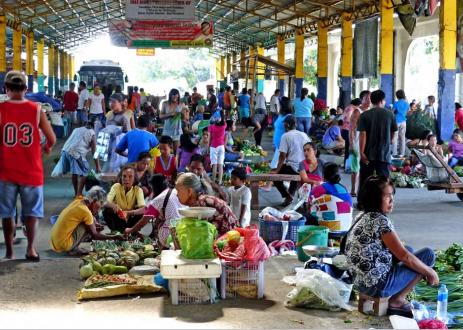确保农作物扩展仅限于环境机会成本低的土地
创造可持续的食物未来, Installment Ten

概要
Installment 10 of创造可持续的食物未来提出针对环境机会成本较低的土地的定义。从那里开始,它提供了有关如何将任何新农田扩展指向这些土地的建议。
Executive Summary
In创造可持续食品未来:临时发现,我们提出,在可持续食品的未来中,世界充分自我养育,而无需将自然生态系统进一步转化为农作物。但是,我们发现,可能很难提高农作物产量并限制粮食作物需求的增长足以缩小2006年全球农作物卡路里之间约70%的差距,而2050年所需的粮食差距绝对没有扩大农田。例如,为了避免每年收获的面积进一步增加,我们发现(粮食作物需求的减少,从2006年到2050年每公顷农作物的平均生产平均增加都必须比正是在过去的44年期(1962年至2006年)中,涵盖了绿色革命。同样,许多研究将在未来几十年中推进农田的扩展。例如,联合国粮食和农业组织(FAO)计划在2006年至2050年之间扩展6,900万公顷(MHA)。Bajzelj等。(2014年)估计,根据最近的作物产量趋势的延续,2009年至2050年之间的扩张幅度要大得多。尽管需求方措施可以帮助缩小差距,但他们可能自己做得不够。例如,在临时发现中,我们发现,到2050年,全球粮食损失和废物的速度减半将使农作物卡路里差距缩小约20%。
从历史上看,新农田来自森林,草原和湿地的转换。但是,这种转换通常具有很高的环境和社会影响。它通常会释放温室气体排放,否则将存储在植被和土壤中,减少野生动植物的栖息地,并破坏分水岭的保护益处,仅举几例。此外,转化可以使生活在这些生态系统中的人们取代,或者引发依赖自然生态系统的社区的社会冲突。因此,紧急地为任何不可避免的农田扩张寻找替代位置。
一种通常建议的选择是将未来的农田扩展集中在“边际”或“退化的土地”上。然而,与退化土地的概念相关的挑战有很多,使该解决方案并不像乍一看那样简单。首先,关于“退化土地”的定义几乎没有共识。其次,降级土地范围和位置的估计差异很大,并且通常不会重叠。第三,通常以退化为降级的大部分土地已经是农田,因此,从定义上讲,不能成为农田扩张的候选者(本工作论文的重点),但却是恢复现有农田作物生产力的候选人(我们鼓励)。将退化的农田恢复到更高的生产率上是提高食品生产的非常重要的策略,但不能被认为是农田的“新来源”。第四,尽管该短语可能意味着大量的无人居住或未利用的土地,但退化的土地不一定是人们未使用或无法提供福利的空置区域。第五,似乎在各种利益中似乎存在“降级土地”,包括那些寻求增强粮食生产,增加木材产品供应,预付生物能源和恢复本地生态系统的人们。换句话说,正在寻求相同的土地出于多种目的。
除了援引“退化”之外,其他试图识别适合农作物扩展的区域的尝试通常会识别出conversion依的土地会产生巨大的环境影响或宽恕收益。这些土地类别有时包括:(1)“潜在的耕地”土地,除了茂密的森林,(2)湿的稀树草原,(3)放牧土地,(4)二级森林和(5)废弃的农田。考虑到这些土地类型一如既往或天生适合于农田扩展,从而高估了可持续农田扩张的土地数量,从而产生了不现实的期望。
To accommodate any cropland expansion in a manner consistent with a sustainable food future, we need to circumvent the ambiguity and other challenges related to the concept of “degraded land” and avoid misconstruing as inherently appropriate for cropland expansion lands whose conversion would have relatively high environmental impacts. One approach is to limit any expansion of cropland to lands with low environmental opportunity costs. This concept acknowledges that there are nearly always opportunity costs to expanding crops onto a tract of land—the opportunity to use that land for some other purpose or to merely let it regenerate into something eventually approaching its native ecosystem. Although borrowed from the world of economics, “opportunity costs” in this working paper focus on forgone environmental benefits.
我们的工作定义是,环境机会成本较低的土地是同时符合至少四个标准的土地:
尚未支持农作物。根据定义,已经用于作物生产的土地(无论多么生产力)都不符合农田地区扩张的区域。
对本地生态系统和生物多样性的影响最小。Any cropland expansion should avoid converting natural ecosystems or negatively impacting biodiversity.
低“碳损失与农作物生产”比率。这些土地与每公顷农作物的可能产量相比,其转化为裁剪的土地将释放相对较少的碳。
低“蓝水”足迹。这些土地的转化为裁剪的土地将降低或至少维持流域中淡水资源的压力。
环境机会成本低的土地范围尚不确定。我们尚未进行全球映射分析。然而,鉴于我们的严格标准,我们的假设是只有适度的土地才有资格。
然后,应根据一组非生物物理学考虑来评估确实符合这四个标准的土地,以确定该区域是否应该转换为农田。这些注意事项包括:
- 经济生存能力。从农民的角度来看,将土地的土地转化为经济上可行的农田吗?
- Legal availability.鉴于土地利用分区和其他政策,在法律上可以将土地的土地转换为农田吗?
- 社会可接受性。Do the people living on or holding rights to the tract of land want it converted to cropland?
- 最佳替代用途。Is cropping an optimal use of that tract of land relative to alternatives such as letting the native ecosystem recover?
不符合标准5、6和7并不意味着必须从考虑一定的审查中删除一块土地,因为可以采取步骤来提高这些标准的绩效。例如,引入经济激励措施可以改善经济生存能力。改变土地使用分区可以使合法可用。改善当地人的利益可以使转化为社会上更容易接受的农作物。
Limiting crop expansion to lands with low environmental opportunity costs is distinct from other strategies or “menu items” profiled in the Interim Findings. For instance, the menu item on “improving land and water management” [see pp. 68-73 in Interim Findings] is about increasing crop productivity per hectare on land that is already being used for crop production. Utilizing lands with low environmental opportunity costs, on the other hand, is about expanding crop production onto areas that currently are not supporting crops. And whereas the menu item “increasing pastureland productivity” (see pp. 77-80 in Interim Findings)是关于改善每公顷肉类和牛奶的生产,该工作文件着重于作物生产。
为了限制未来的农田扩展到环境机会成本较低的土地,需要三套政策,激励措施和做法(统称为“措施”)。第一组措施旨在更清楚地了解环境机会成本较低的地点。这些包括:
Agreeing on a clear definition.
Applying our criteria to generate maps.
Identifying cleared or abandoned agricultural lands where biophysical or human factors are blocking natural regeneration.
第二组措施将有助于使用较低的环境机会成本的土地。为了使农民将这些地区用于农作物,需要从法律,经济和社会角度获得土地。这些措施包括:
优先考虑参与式空间规划中环境机会成本较低的土地。
在环境机会成本较低的土地上澄清和加强土地权限。
引入为农民提供经济激励措施,以使用低环境机会成本的土地。
改善使用此类土地的技术援助和农村扩建。
Strengthening community engagement processes.
The third set of measures is designed to discourage cropland expansion to lands with high environmental opportunity costs by making the financial, reputational, market access, or legal “cost” of converting natural ecosystems into cropland greater than the cost of expanding onto lands with low environmental opportunity costs. This set can stimulate demand by farmers and agricultural companies to use lands with low environmental opportunity costs. These measures include:
引入和实施暂停自然生态系统。
加速采用“无砍伐森林”供应链承诺。
Implementing monitoring systems.
The relative importance of these measures will depend on the particular contextual circumstances of the tract of land being considered. And the second and third set of measures are generally important for encouraging sustainable agricultural intensification on existing cropland and grazing lands, too. Combined, all three groups of measures could help direct any cropland expansion toward lands with low environmental opportunity costs, thereby helping contributing to the menu for a sustainable food future.

